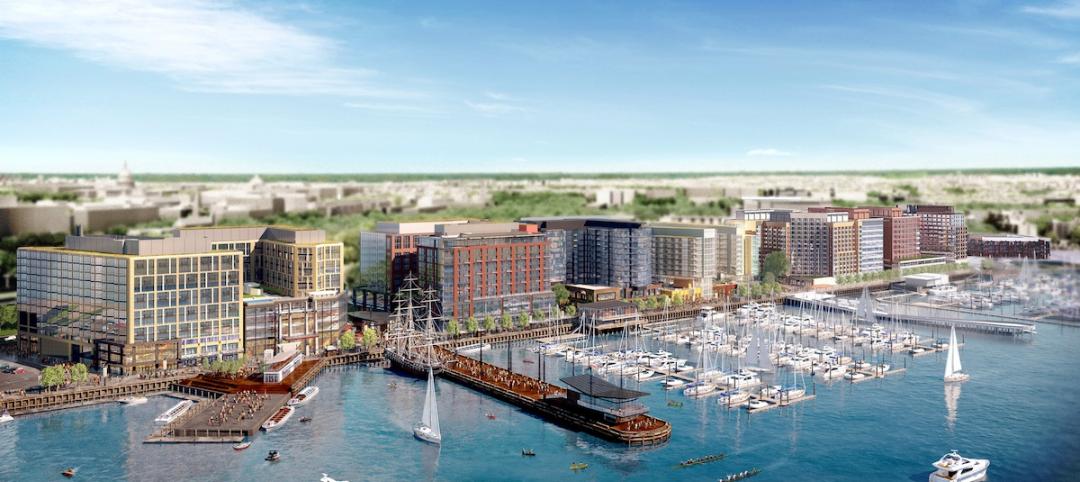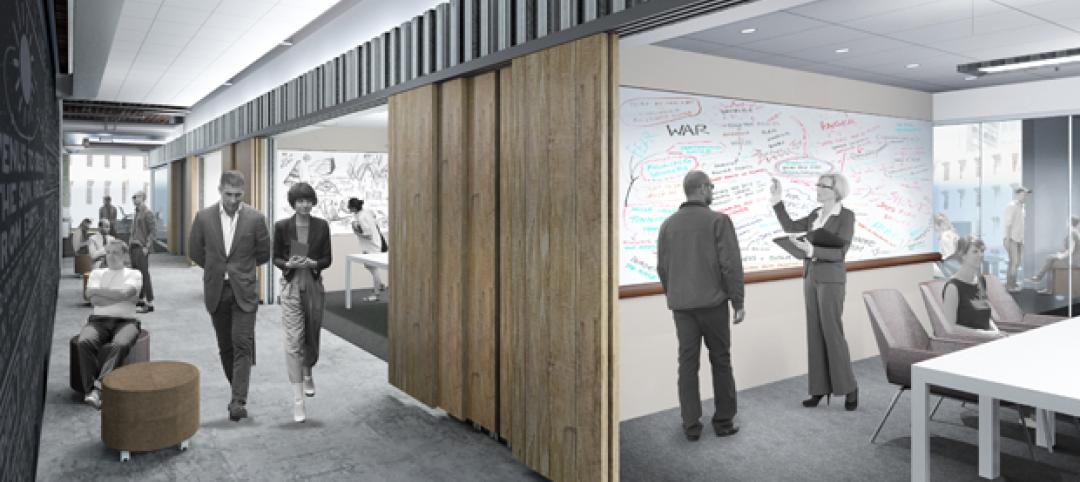Heineken USA’s headquarters at 360 Hamilton Avenue in White Plains, N.Y. consolidates Heineken offices from two other locations into one, primary location.
Spector Group, the primary interior architect for the redesign focused on two main improvements with the redesign: the expansion of the company’s bar and social zones and the enhancement and densification of the existing 60,000-sf bi-level space. “Creating an open and collaborative environment was our primary goal for Heineken’s new office design,” says Scott Spector, AIA, a Principal of Spector Group, in a release.
Employees and guests enter the building and are immediately greeted with a palette of simple raw materials. These materials are offset by modern design elements located throughout the expansive bar, “insperience” hub, and reception area. Large interactive screens and the experiential bar design highlight Heineken’s innovative company culture.
As part of creating a new open work style, the dedicated office spaces were converted to meeting and team rooms. A centrally located café is meant to increase the sense of community among employees. Platforms at the base of the intercommunicating stairway, which was altered to make it more open, provide casual breakout spaces.
The completed headquarters redesign, according to Ron Siesser, Senior Director of Human Resources, Heineken, USA, reflects the company’s “commitment to being a social, communal, and, most important, fun portfolio of brands.”
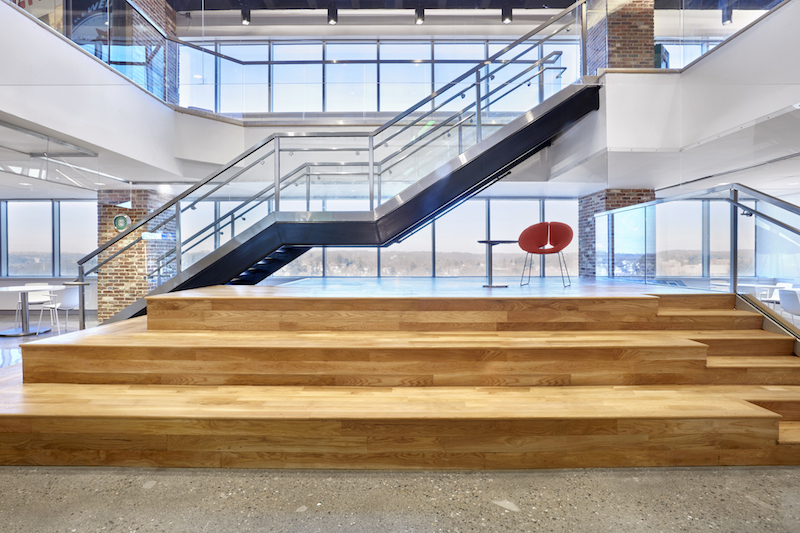 Photo: Garrett Rowland
Photo: Garrett Rowland
 Photo: Garrett Rowland
Photo: Garrett Rowland
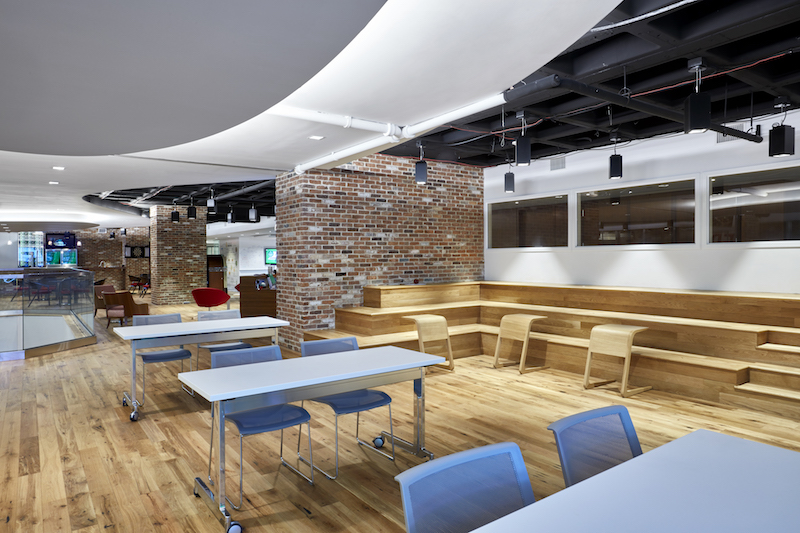 Photo: Garrett Rowland
Photo: Garrett Rowland
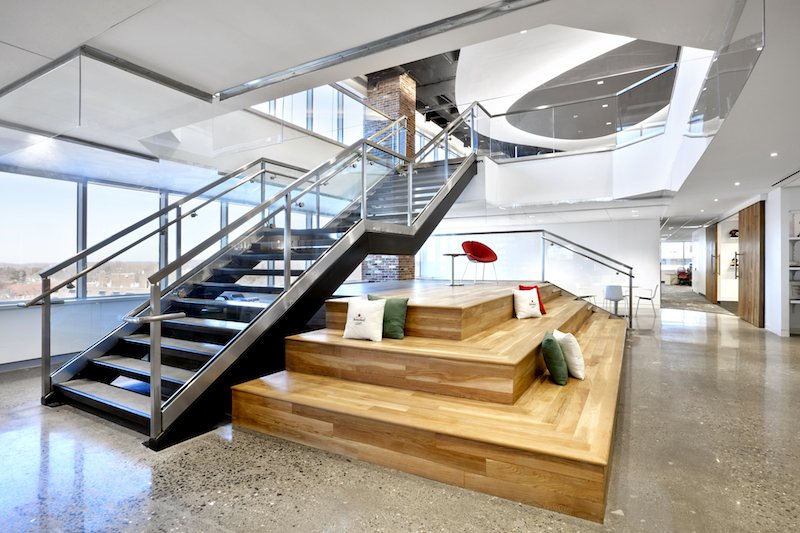 Photo: Garrett Rowland
Photo: Garrett Rowland
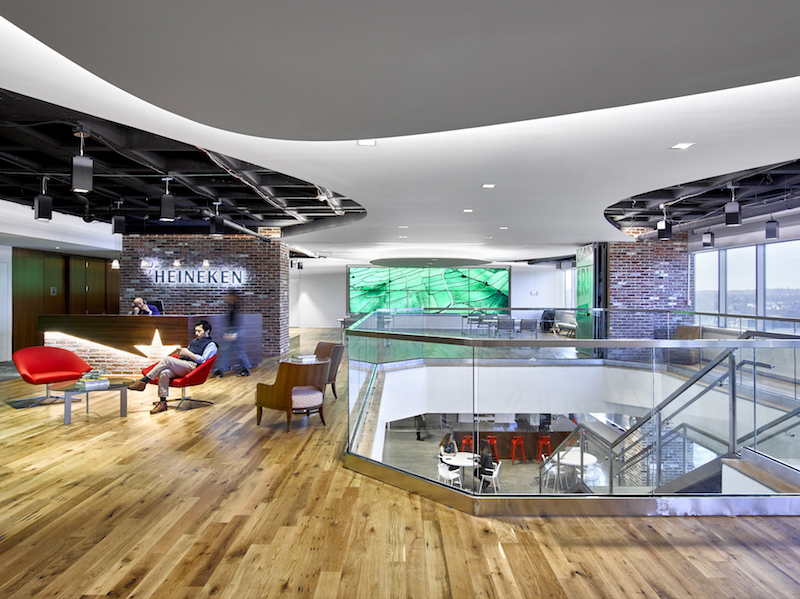 Photo: Garrett Rowland
Photo: Garrett Rowland
Related Stories
| Mar 25, 2014
World's tallest towers: Adrian Smith, Gordon Gill discuss designing Burj Khalifa, Kingdom Tower
The design duo discusses the founding of Adrian Smith + Gordon Gill Architects and the design of the next world's tallest, Kingdom Tower, which will top the Burj Khalifa by as much as a kilometer.
| Mar 24, 2014
Frank Lloyd Wright's S.C. Johnson Research Tower to open to the public—32 years after closing
The 14-story tower, one of only two Wright-designed high-rises to be built, has been off limits to the public since its construction in 1950.
| Mar 21, 2014
Forget wood skyscrapers - Check out these stunning bamboo high-rise concepts [slideshow]
The Singapore Bamboo Skyscraper competition invited design teams to explore the possibilities of using bamboo as the dominant material in a high-rise project for the Singapore skyline.
| Mar 20, 2014
Common EIFS failures, and how to prevent them
Poor workmanship, impact damage, building movement, and incompatible or unsound substrate are among the major culprits of EIFS problems.
| Mar 20, 2014
D.C. breaks ground on $2B mega waterfront development [slideshow]
When complete, the Wharf will feature approximately 3 million sf of new residential, office, hotel, retail, cultural, and public uses, including waterfront parks, promenades, piers, and docks.
| Mar 17, 2014
Rem Koolhaas explains China's plans for its 'ghost cities'
China's goal, according to Koolhaas, is to de-incentivize migration into already overcrowded cities.
| Mar 13, 2014
Austria's tallest tower shimmers with striking 'folded façade' [slideshow]
The 58-story DC Tower 1 is the first of two high-rises designed by Dominique Perrault Architecture for Vienna's skyline.
| Mar 12, 2014
London grows up: 236 tall buildings to be added to skyline in coming decade, says think tank
The vast majority of high-rise projects in the works are residential towers, which could help tackle the city's housing crisis, according to a new report by New London Architecture.
| Mar 12, 2014
14 new ideas for doors and door hardware
From a high-tech classroom lockdown system to an impact-resistant wide-stile door line, BD+C editors present a collection of door and door hardware innovations.
| Feb 27, 2014
Open or private offices? It depends on the business plan
Open layouts are grabbing headlines as a hallmark of the new workplace—think the Google campus or Facebook's headquarters. And for smaller-scale operations, open designs are often lauded for being less expensive than private office plans. But does that mean all offices should have an open layout?







